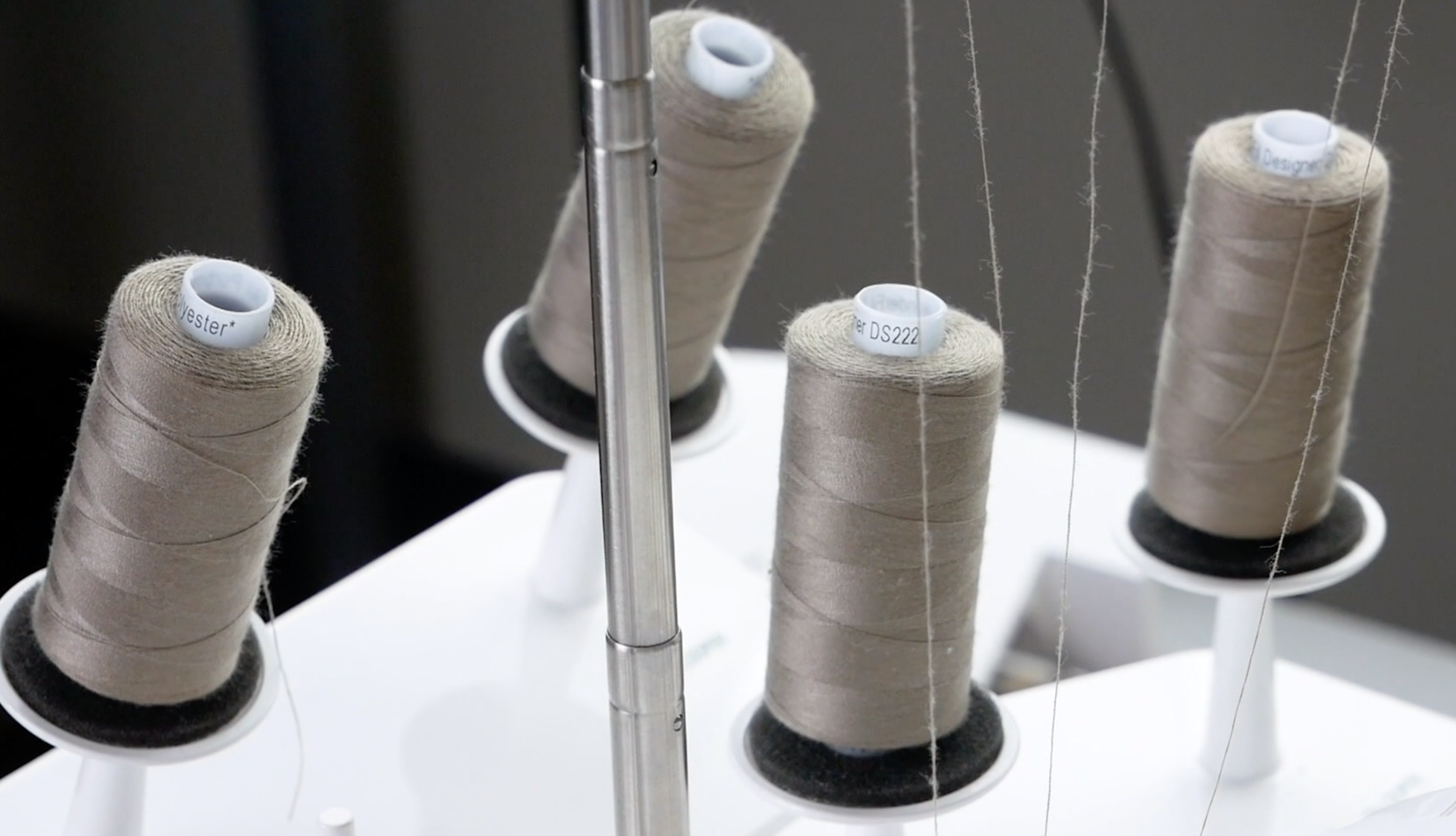How to Patch Jeans Without a Sewing Machine
Maura Kang
Have you got a pair of jeans that has a big hole in it? As trendy as that might look, sometimes you just want to close it back up again. I’ll share with you a super easy way to patch the tears in your jeans and you don’t even need a sewing machine! This is a great way to keep them out of the dump so you can keep wearing them for years to come.
Before starting, cut away any extra threads from the hole. Next, measure the size of the tear and cut out a piece from another piece of heavy fabric about an inch bigger on each size. The fabric can be another piece of denim or other thick material such as canvas. Pin it in place, making sure to space your pins slightly away from the hole.
Now you’ll need the thread. I’ll be using this medium 40wt thread called Designer. It’s a strong polyester so it will help hold up to heavy use, and it’s has some stretch to it, so it will flex with the fabric. It also comes in 210 colours, so choose one that best matches the colour of your pants.
Thread your needle and tie a knot on one end. Then place the smaller piece of fabric behind the hole so it’s fully covered. Take a stitch on one end of the hole so that the knot is hidden on the inside of the fabric. Then go across to the other side of the hole and make another small stitch, this time making sure to put the needle through second layer of fabric as well. Return back to the other side of the hole and take another stitch, going through both layers of fabric.
You’re going to continue sewing back and forth, each time pulling the hole closed until you reach the other side. Tie off your thread. Now turn your pants inside out and trim the extra reinforcement fabric by your stitching. Be careful not to cut into the stitching itself.
Once you finish taking your last stitch, you can tie off the thread and snip it close. Turn your garment right side out again and massage the fabric around where the hole used to be to help relax the fabric. You should also give it a quick press with steam to reduce the puckering.
We hoped this tutorial helped you save a pair of jeans! Inspired to sew with Designer™? You can find a list of stores that carry WonderFil threads on www.shopwonderfil.com/shop-local/. You can also sign up to receive weekly sewing tips, free patterns, and tutorials in our newsletter. Register by clicking here! You can unsubscribe at any time by clicking the unsubscribe button on the footer of every email you receive.



























